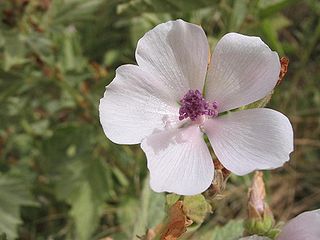BillLee wrote:Warning: Newbie alert!
I am NOT an astonomer or anything! But I enjoy the fantastic images in the APOD. I have gathered a large number of them and use them for my screen background.
Question: How do you distinguish stars referenced in an image like the one today (Rosette Nebula) from foreground stars?
I.e.: the description says "...winds and radiation from its central cluster of hot young stars...". How can I tell which of the many stars in the central area of the image are those referenced and not some star in the foreground?
Thanks.
Regards,
Bill Lee
I would be able to give you a better answer if I had access to my software as I'm writing this.
In the case of the Rosette Nebula, you can see that the nebula is quite symmetric and round. You can also see that there is what looks like a "hole" or a cavity in the middle. You can also see that there are some bright stars in or very near this cavity.
Young stars are born from a cloud of gas and dust. When they are born, they will illuminate what remains of their birth cloud with their own light. If the stars are hot enough, they will ionize the gas of the remaining cloud. That is, they will emit a lot of ultraviolet photons which will disturb the electrons of the atomic hydrogen in the gas, imparting energy to them. The electrons will then radiate this extra energy away as red light.
You can see that the Rosette Nebula is very red, because of all the ultraviolet light that is emitted by a few hot bright stars. The ultraviolet light is imparting extra energy to very many electrons, which re-radiate this energy as red light. You can see that a few bright stars appear to be more or less at the center of this red nebula. It is a good guess that the bright stars in the middle caused the gas to glow red.
Closer to the hot bright stars, the "wind" they emit will be so strong that they blow away any gas in their vicinity. You can see that there is what appears to be a "hole" in the middle of the nebula, and you can see that many of the bright stars appear to sit inside this "cavity". It is a good guess that many of these stars are responsible for blowing the central "hole" in the nebula.
However, not all of the bright stars "in the middle" are actually part of the cluster that ionizes the nebula and makes it glow red. The apparently brightest star, a yellowish star at four o'clock, is a foreground star. How can you know that just by looking at the picture?
You can't. You have to measure the parallax of the star and compare it with the parallax of the other bright stars in the middle of the nebula. Measuring the parallax of a star means that you use triangulation to see how far away it is. Basically, a more nearby star will be seen to move relative to the stars that are farther away, as the Earth follows its orbit around the Sun. However, this effect is never visible to the naked eye.
You can also carefully measure how the stars appear to move across the sky over the course of several years. The stars that belong to a cluster will all move in more or less the same direction at more or less the same speed. A star that does not belong to the cluster will move in a different direction and at a different speed. Again you need astronomical instruments to measure this effect.
You can also examine the spectra of the stars. The spectrum of a star will always be strongly affected by the temperature of the star. However, you can usually also tell from the spectrum of a star if the star is small, big or very big.
Let's consider the bright yellowish star again. Its parallax is not the same as the parallax of the bright blue stars in the middle of the nebula. The yellow star is seen to move more than the blue stars in response to the Earth's motion around the Sun. Therefore the yellow star is closer to us than the blue stars. Also the yellow star isn't moving in the same direction or at the same speed as the blue stars. Also, the spectrum of the yellow star says that although this star is big, it is not as big as it would have to be if it was at the same distance from us as the blue stars.
Therefore, the yellow star is a foreground star.
Ann
 The Rosette Nebula
The Rosette Nebula

